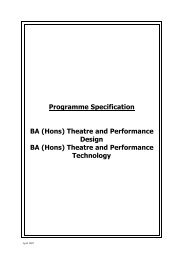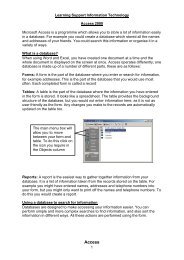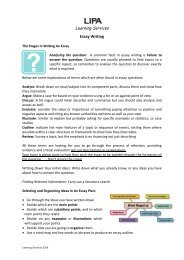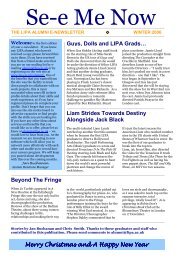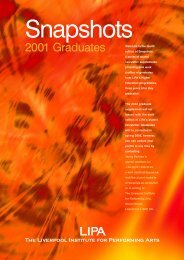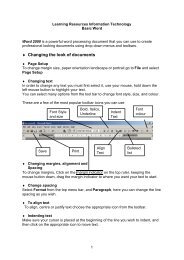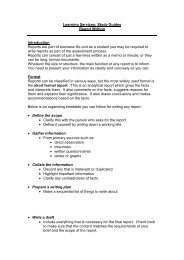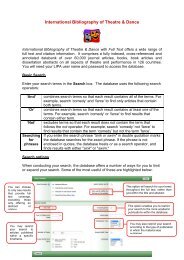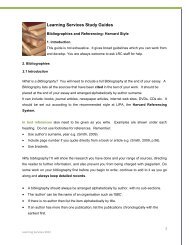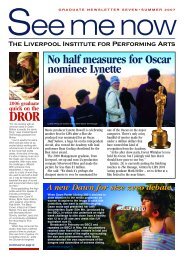Report writing
Report writing
Report writing
- No tags were found...
Create successful ePaper yourself
Turn your PDF publications into a flip-book with our unique Google optimized e-Paper software.
Learning Services<strong>Report</strong> Writing<strong>Report</strong>s are part of business life and as a student you may be required to write reportsas part of an assessment. <strong>Report</strong>s can consist of just a few lines written as a memo orminute; or they can be long, formal documents. Whatever the size or structure, themain function of any report is to inform. You need to present your information asclearly and concisely as you can.Format<strong>Report</strong>s can be classified in various ways, but the most widely used format is the short formalreport. This is an analytical report which gives the facts and interprets them. It may present thesein the form of charts or tables. The report should comment on the facts, suggest reasons for themand explain their significance. It also draws conclusions and makes recommendations based on thefacts.GoalThe style and content of your report should be appropriate to its intended audience. If you are<strong>writing</strong> for a client, such as your work placement employer, tailor the report to their requirements.Remember to evaluate different options before making recommendations, and if appropriateinclude details of costs and possible profits/losses.Below is a timetable you can follow for <strong>writing</strong> any report.Define the scope Clarify this with the person who asks for the report Define it yourself by <strong>writing</strong> down a working titleGather information From primary sources such as: direct observation interviews written questionnaires tables or graphsCollate the information Discard any that is irrelevant or duplicated Highlight important information Clarify any contradictions of factsPrepare a <strong>writing</strong> plan Make a sequential list of things to write about.Write a draft Include everything that is necessary for the final report. Check back to make sure thatthe content matches the requirements of your brief and the scope of the report.Write the final report Edit and polish the language style. Follow an established layout for ease of reading and indexing. See the example reportbelow.© Learning Services 20111
Example of a <strong>Report</strong>Title: REPORT ON THE BRITISH MUSIC INDUSTRY1.0 Terms of reference/IntroductionOn the instructions of ... on memo...2.0 Methodology2.1 What you did first (e.g. inspection or gather information from graphs etc.)2.2 What you did next (e.g. interviews or analyse the data)3.0 Findings3.1 The British Music Industry today3.1.1 London3.1.2 Outside London3.2 Surrounding issues...and so on4.0 ConclusionsMay be numbered or just one logical paragraph5.0 Recommendations5.1 That the Music Industry looks at it’s profile.5.2 That the Music Industry looks at new markets (based on your own findings)<strong>Report</strong>ing officer/s: Name/s and titles at the end of the report.Date: Date report completedFor a long report it is usual to attach an abstract or single-sheet summary of the major points atthe beginning of the report proper.Style and Tone• Always be factual and objective.• Distinguish between facts and conclusions.• Keep technical language to a level that the reader will understand.• Avoid jargon. Use plain English at all times.• Be consistent with layout.For further help and advice ask at the LRC.Staff will be happy to help you!LRC@lipa.ac.uk 0151 330 3111© Learning Services 20112



